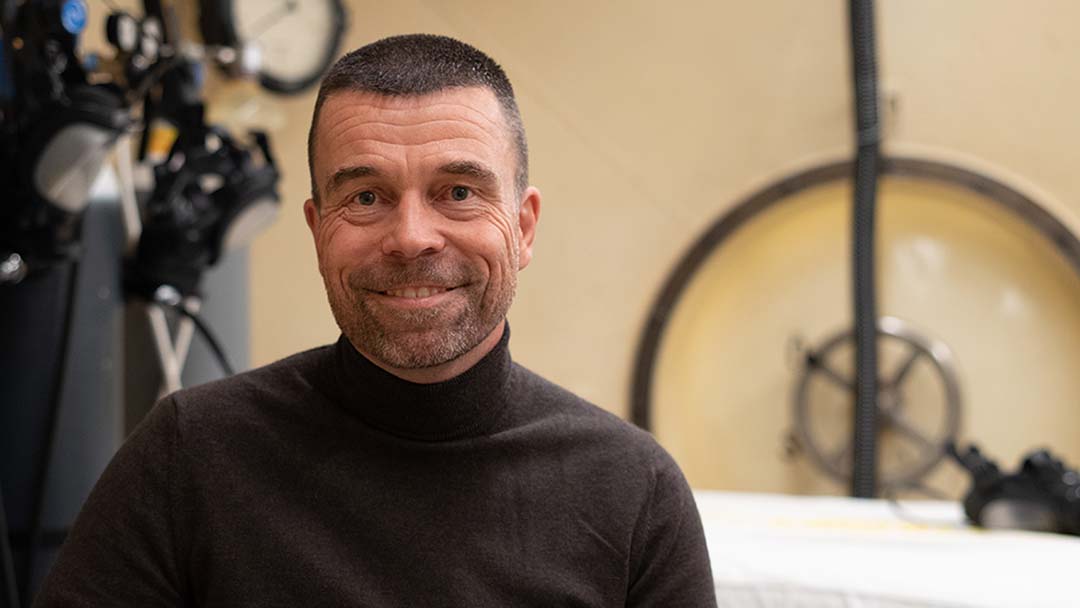Rickard Ånell, Division of Environmental Physiology
Decompression strain during long-duration, high-altitude exposures

Rickard Ånell defends his dissertation "Decompression strain during long-duration, high-altitude exposures" on 17 September.
“My dissertation is about decompression sickness, you can get diving sickness when you fly at high altitudes. What we have looked at are pilots who fly at high altitude and high altitude jumping, and this may be relevant for space travel, so it has a lot of military applications,” says Rickard Ånell.
What have you discovered?
“We have actually been able to show what effect pressure alone has, and that a change in pressure alone is insufficient to get rid of the bubbles in the blood. We have also shown that just oxygen is insufficient, but that with a combination of oxygen and a rapid increase in pressure at high altitude exposure, you can get rid of the bubbles in the body for a fairly long time,” says Rickard Ånell.
“When flying at really high altitudes, there is a maximum time limit depending on the type of machine you use. We may be able to help adjust those maximum flight times. By flying in a certain way, you may be able to extend your time at high altitude.”
Compared to other techniques for getting rid of nitrogen in the body, Rickard Ånell believes that this solution can be a relatively simple and practical way to increase safety in high-altitude flying.
“In that way we have been a little lucky, we have got a result!”
Rickard Ånell is an orthopedist who worked in the armed forces and then started at Saab, and that was the way he became an externally employed doctoral student at KTH. He has also worked with the training of paratroopers in Karlsborg.
“In connection with that, I saw that the jump masters (parachute instructors) got pressure sickness. So already in the early 2000s, I wrote some local restrictions on how to fly, so that was really when I got the idea.”
During the course of his dissertation, Rickard Ånell's research group has published four scientific articles, and the research was awarded the Arnold Tuttle Award for best research in space and aeronautical medicine research last year. Regarding civilian applications, it is mainly in space travel that Rickard Ånell believes that his findings can be used.
Will you continue in the research world?
”Absolutely! But it will be in a different form. My boss, Saab and KTH must agree, but there is an established program between Saab and KTH and we have some projects that are direct successors to what we have done. There has been a slight difference between being a doctoral student and being medically responsible at Saab. But being a doctoral student is a good way to stay humble.”
